June 2022 - You are accessing an old version of our website. The SDGs Voluntary Commitments have been migrated here: https://sdgs.un.org/partnerships
You will be redirected to the new Partnership Platform in 10 seconds.
June 2022 - You are accessing an old version of our website. The SDGs Voluntary Commitments have been migrated here: https://sdgs.un.org/partnerships
You will be redirected to the new Partnership Platform in 10 seconds.
Farmer Managed Natural Regeneration (FMNR) is a low-cost land restoration technique used to combat poverty and hunger amongst poor subsistence farmers by increasing food and timber production and resilience to climate extremes. Started in 1983 in Niger, FMNR is a form of coppicing and pollarding, drawing on traditional practices and sensitive to local variations.
In FMNR systems, farmers protect and manage the growth of trees and shrubs that regenerate naturally in their fields from root stock or from seeds dispersed through animal manure. FMNR is an easy, low-cost way for farmers to increase the number of trees in the fields.
Through the restoration of vegetation, FMNR addresses multiple problems simultaneously, including: land degradation, soil infertility and erosion, biodiversity loss, food insecurity, fuel wood, building timber and fodder shortages and dysfunctional hydrological cycles (exacerbated flood and drought events, reduced ground water recharge, drying of springs, wells and streams). FMNR is both an effective climate mitigation and adaptation intervention. At scale, FMNR contributes to increased recharge of groundwater and increased soil moisture, and more so when done in combination with physical soil and water conservation measures. Through these impacts, FMNR is an effective means of reducing poverty even of those furthest behind.
The main goal is to improve livelihoods through improved ecosystem health and function. Specific objectives will vary according to the context. E.g. in Niger, major issues addressed by FMNR included – low soil fertility, drought, destructive winds, low yields, periodic crop failure and fuel wood shortage. In East Timor, flooding, landslides and low soil fertility are major issues. And in pastoral zones of East Africa, lack of fodder is a major issue. The interrelated social, economic and environmental advantages of FMNR generally include the following. Because FMNR contributes to lifting yields and income, it has a positive effect on livelihoods, food security, resilience and risk reduction. There are documented reports of reduced impact of drought and reduced incidence of flooding. Women and children’s burdens become lighter as fuel wood is easier to gather and is closer at hand. Women have more time to pursue economic and other activities. Their status in the community is often lifted as they participate in decision making group activities and sometimes, leadership. Children are more likely to go to school. FMNR can contribute to income diversification increased investment in agriculture and economic activities resulting in poverty reduction and sustainable wealth creation. FMNR increases resilience and reduces risks. E.g. farmers practicing FMNR are more likely to harvest an annual crop in a drought year than non-practicing neighbours and, having trees in their farmlands, they have other options to draw from, including harvest and sale of fuelwood, timber, wild fruits, traditional medicines and fodder. Because all resources and expertise needed can be found or developed within a community, FMNR does not create dependency and adoption and spread often continues well beyond the life of any externally funded project. Well-conceived FMNR projects facilitate good governance, greater collaboration, gender equality and peace building. Practitioners often express a heightened sense of wellbeing. Having greater agency in managing natural resources along with success builds confidence and there is a greater propensity to take calculated risks in investing in improvements to production systems. A common outcome of FMNR interventions is the restoration of hope.
Challenges were met though patient perseverance and belief that change was both necessary for survival and possible. Exchange visits and peer to peer learning were facilitated, Encouragement and support was extended for a long enough period to foster the practice until the benefits of FMNR were self-evident to all.
All stakeholders including farmers and nomadic herders, men, women, children, government authorities, forest and agriculture agents, merchants, NGOs, traditional chiefs and religious leaders are engaged. The main beneficiaries are land owners and whole communities. FMNR promoters include World Vision, the Global Evergreening Alliance, World Agroforestry Centre, World Resources Institute and various NGOs and local governments. Tony Rinaudo, who pioneered this technique in the mid 1980s, has recently received the Right Livelihood Award. The prize money will be used to scale up FMNR and the Right Livelihood Award Foundation will also help in the promotion of this technique.
Implementation procedures include:
1. Conduct FMNR participatory sensitisation meetings with traditional and government leaders, forestry and agriculture department staff, other NGOs/CBOS and community members. This enlightens them on what FMNR is and how it connects in to their livelihoods. Planning meetings can be held at the same time or later.
2. FMNR training for project and government extension agents.
3. Communities select FMNR champions who will actively teach and lead by example.
4. Extension Agents train farmer champions and provide follow up and monitoring, giving encouragement and assistance with problem solving.
5. Following adoptions, exchange visits from neighbouring districts are facilitated. Most 'farmers believe by seeing' and hearing from peers, triggering adoption.
6. Tree product value chains are developed. FMNR is integrated with other livelihood options enabling poor communities to let the trees grow as they will have diversified income sources to meet immediate needs.
The practice was co-developed with farmers in Niger, and in each new context, it is adapted with land users to suit the unique needs and goals of local communities in line with their environment. Along with its low cost, this freedom and “farmer managed” aspect of FMNR has enabled FMNR to spread rapidly. The actual practice of FMNR includes 3 steps:
1. Farmers select desired tree stumps and for each stump choose a number of the tallest and straightest stems to leave.
2. Remove the unwanted stems and side branches. Manage any threats to remaining branches from livestock, fire and competing vegetation (weeds)
3. Cull emerging new stems and prune side branches from time to time.
Policy dimension: many countries have formal tenure systems that are dis-incentives to farmers to care about trees. Sometimes conflicting formal and informal tenure systems exist. An enabling policy environment and locally agreed codes and rules with support from village and district chiefs are important factors to the success of FMNR, since they are a big deterrent to would-be offenders.Unlike projects, social movements do not have clearly defined start and end dates. Movements are not limited to geographical boundaries and by their very nature cannot be orchestrated. We can implement key elements which we think will contribute towards the success of the movement but we cannot predict when or how a movement will occur. The idea behind the scaling up of FMNR is not simply to initiate projects in various countries, it is to facilitate creation of regreening movements. Most monitoring is through regular monitoring and evaluation procedures involving one-on-one and focal point discussions, utilizing before and after photos and satellite images counting trees and measuring land area under FMNR and measuring impacts such as on crop yields, fuel wood, fodder, carbon sequestration and income. Currently, software is being developed to automate interpretation of satellite data and Applications are being developed for hand held devices.
Nigerien Farmers produce an additional 500,000 tons of cereal/year because of FMNR than in the 1970s and 1980s. Resulting in 2.5 million people being more food secure. Gross income in Maradi Region, Niger has grown by $17 - 21 million or ~ $1,000/ household/year. Extrapolated nationally, income benefits of $900 million/year accrue to 900,000 households or 4.5 million people. A 2018 study (Kenya) found that cows are more likely to survive dry periods with FMNR allowing for productive rather than disaster management, leads to tripling carrying capacity and reduces the work burden of women. Farms with well-managed full FMNR ~ double productivity and economic performance of staple crops. FMNR practicing farmers were only marginally better off than non-practicing neighbours in good rainfall years, but were up to 5-fold better off in drought years. A 2010 study conducted (Senegal) found a significant increase in grain yields under FMNR compared to traditional (no tree cover, no inputs) land management practices – 767 Kg/ha compared to 296 Kg/ha. A 2013 Social Return on Investment report (World Vision Ghana) calculated that, after including discounting factors, investment of funds, staff and technical input generated a Social Return On Investment ratio of 6:1 by year three (end of the project) in the target communities. The study calculated that the project will generate a ratio of 17:1 four years after project closure and 43:1 - 10 years after project closure.
FMNR has substantially alleviated the fuelwood energy crisis in Niger and in other countries where it has been adopted. In the Aguie district, Niger, farmland that was virtually treeless in the early 1980’s now sport 103-122 to trees per hectare and sustainably harvested fuel wood is sold locally and across the border to Nigeria. Indigenous trees and shrub have been regenerated across millions of hectares of land, providing habitat and food for birds, mammals, reptiles and amphibians increasing ecosystem function and biodiversity. FMNR farmers have greater access to wild foods, traditional medicines. New enterprise opportunities arise such as bee keeping. FMNR enables women to have an increased role in community decision making, increases women’s social standing and power, often decreases time required to collect fuelwood and increases income generating opportunities for women. Communities may be empowered to engage with governments to obtain secure tenure and user rights for natural resources. Unanticipated impacts include restoration of hope which builds confidence and willingness to invest in, improve land and sustainably manage natural resources; greater awareness, appreciation and sustainable management of natural resources; recharged water tables and restoration of water sources; reduction in conflict and poverty driven migration.
Constraints include free range grazing, bushfires, continuous woody biomass removal, including theft and border to border cultivation. These are destructive human behaviour issues springing from false beliefs and negative attitudes. Enabling factors are things which bring about mindset change, and secondly support positive practices e.g. enabling policies allowing tree ownership and/or user rights, locally generated by-laws and enforcement, membership in FMNR practitioner groups and legal market access to sell tree products. Successful overcoming constraints is correlated with building trust relationships, close and regular follow up visits, short, mid and long-term significant benefits and increased income and social standing. There are five essential conditions for spontaneous adoption of agroforestry enterprises by resource poor households: ease of access to markets for the forestry products, benefits (economic and other) from agroforestry are higher than from alternatives, a viable forestry production technology is available and known to farmers, farmer access to sufficient areas of land and security of tenure to that land and farmer confidence in being able to control risk, such as fire, pests, theft. Well designed FMNR programs work to create these enabling conditions.
Financing: A typical project costs $40-$50/hectare, however major costs are typically include those of complementary project activities such as water harvesting, promotion of horticultural crops, fuel efficient stoves and improved livestock breeds. Once introduced, FMNR costs nothing to the farmer except his/her labour. It is estimated that farmer implementation of FMNR on one hectare of land in Niger cost ~$14 in labour equivalent. Because FMNR continues to spread beyond the life of a project and beyond project areas, over time, the cost per hectare continues to decline. FMNR comes out favourably when compared to conventional reforestation techniques. The low/no cost partially explains how, in Niger Republic, over 20 years, 200 million trees were regenerated by farmers, most of whom had no support from projects or governments, spreading at a rate of 250,000 hectares per year. In the twenty-year period prior to 1980, some 60 million trees were planted in Niger at great cost, yet, officially only 20% survived.
Social/ policy challenges: Social challenges to implementation include false beliefs, negative attitudes and destructive practices against trees. There are also policy challenges: many countries prevent farmers from taking responsibility for tree care or from legally benefiting, resulting in greater tree destruction. Tree theft is a major discouragement to adoption in some contexts. Challenges are addressed through workshops, awareness creation, advocacy, capacity building (especially peer to peer), development of pilot sites, facilitating exchange visits, regular follow up, partnering with all stakeholders, creating an enabling environment including favourable policies, creating market opportunities. FMNR provides an innovation platform to farmers. There are examples of - FMNR regenerated wild fruiting trees (e.g. Zyzyphus species) being top grafted with improved cultivars which greatly increase income; farmers investing in modern bee hives because of increased potential due to flowering trees; farmers investing in fencing and hay barns for the first time.
Evidence across the Sahel shows that communities transform their lives through the social and environmental benefits of FMNR, leading to economic sustainability. As such, FMNR is an integrated development approach, leading to sustainable development outcomes. For environmental, social and economic impact refer to SROI study cited in Results/Outputs/Impacts section of this submission. Cost efficiency implications: a typical project costs $40-$50/hectare, including costs complementary activities e.g. water harvesting and use, horticultural crops, fuel efficient stoves etc. Farmer implementation / hectare costs are ~$14 in labour equivalent in Niger. Because FMNR continues to spread beyond the life of a project, over time, the cost/hectare continues to decline. By comparison, a 1984 Earthscan W. African study revealed that tree plantations cost $18,000/hectare when failed plantations were accounted for, and further spread was dependant on continued external financing. Low cost partially explains the rapid spread of FMNR in Niger with no support from projects or governments after project closure. Replicability elsewhere: FMNR rapidly went to scale in Niger primarily as a bottom up, farmer led movement. Today, organizations are promoting FMNR to donors, governments, NGOs, farmers and community organizations. Early signs of rapid scale are beginning to be seen in Ethiopia, Kenya, Tanzania, Rwanda, Malawi, Uganda, S. Sudan, Mali, Ghana and Senegal. In Malawi the spread seems to be an entirely indigenous movement without any external support. Organizations are partnering to support the Bonn Challenge (to restore 350 million hectares of degraded land globally by 2030), and AFR100 which aims to restore 100 million hectares of degraded land in Africa) by awareness creation and by providing capacity building and support. The World Resources Institute has developed a guide: ‘Scaling Up Regreening: Six Steps to Success in an effort to make the information available to a wider audience and speed up the adoption rate.
Scale up efforts include: Face to face workshops. The reported number of individuals trained in World Vision Programs in the last five years is 437,894, while numerous other organizations are actively using this approach. An FMNR On Line Training course was established by World Vision Australia in 2015. By 2017, 90 graduates trained 2,520 World vision and non-World Vision stakeholders and an estimated 25,272 community members directly, and by cascade effect, 75,816 additional community members have been trained. Plans are in place to make this course available to non-World vision persons. World Vision Australia is in the final draft stages of producing an FMNR manual which will be available online. Downloadable summary pages for each chapter will be developed so that field workers can have ready access to information. The manual contains photos, diagrams, step by step instructions, case studies and research references. The 154 page document is being edited and formatted and should be online by July 2018.
FMNR has a great potential to reduce vulnerability and increase the resilience of households in the dryland of sub-Saharan Africa and beyond through environmental restoration and sustainable land and vegetation management. FMNR improves the livelihoods of the smallholder farmers while at the same time contributing to climate change mitigation and adaptation. If Niger, one of the world’s poorest countries, with extremely harsh climatic conditions and no government and little NGO support restored 200 million trees in 20 years largely through a farmer-to-farmer movement, what would be possible if all stakeholders (Gov., NGO, Research, Education institutions, traditional leaders, donors and communities) partnered and were serious about land restoration? Nothing short of unprecedented global regreening is technically possible. Indeed, the experience of FMNR in Niger shows that this practice could prove key to the success of the AFR100 initiative and the Bonn Challenge. FMNR broke new ground because it is empowering, does not create dependency on external resources or expertise, it is simple, low cost and rapid and it is accessible to the poorest farmer. FMNR is a ‘no regrets’ technology – there is no insurmountable down side to adoption, so risks are minimal. FMNR is farmer driven. Therefore, FMNR is connected to people’s aspirations, sense of self-worth and dignity. What happened in Niger was not a technological breakthrough and it was not reliant on enormous injections of money. It was people’s breakthrough. We will be successful at restoring the vast area of the world’s degraded farm and forest land when we learn to walk alongside those whose livelihoods depend on these areas, and together learn how to repair and maintain them, all the wile restoring people’s sense of pride and self-worth in the process. FMNR has proved to be an appropriate method for sustainable land management. Comparing with reforestation through tree planting, FMNR has proved to be faster and lower cost. Indeed, conventional approaches to reforestation in Niger, face insurmountable problems and they are expensive and labour intensive. Once tree seeds are planted out, drought, sand blasting, pests, competition from weeds and destruction by animals negated efforts. Because FMNR relies on well developed root systems (what I call the ‘underground forest’), the survival rate of trees regenerated by FMNR commonly 90-100%. Moreover, the developed root system helps trees to grow faster than in the case of tree seeds. This feature is important in arid environments such as the Sahel, for tree growth is slower in this kind of environments. FMNR according to other people: Dr. R. Stirzakker wrote: ‘FMNR is counter-intuitive. Traditional agroforestry has tried to specify the ultimate tree-crop combination and arrangement that maximises complementarily. I do not think that any research program, no matter how well funded, would have come up with the idea, because it expertly combines the subtleties of location specific tree selection with farmer specific opportunities and constraints. "It's also been called "probably the largest positive environmental transformation in the Sahel and perhaps in all of Africa," by internationally acclaimed environmental specialist Chris Reij.
Websites:
Information on FMNR is freely shared on the world wide web - http://fmnrhub.com.au/.
https://www.rightlivelihoodaward.org/laureates/tony-rinaudo
Peer reviewed articles:
Tougiani A, Guero C, Rinaudo T (2009) Community mobilisation for improved livelihoods through tree crop management in Niger. GeoJournal 74:377-389
Haglund E, Ndjeunga J, Snook L, Pasternak D (2011) Dry land tree management for improved household livelihoods: Farmer managed natural regeneration in Niger. J Environ Manag 92:1696-1705
Larwanou M, Abdoulaye M, Reij C (2006) Etude de la regeneration naturelle assistée dans la Région de Zinder (Niger): une première exploration d’un phénomène spectaculaire. International Resources Group (IRG), for the US Agency for International Development (USAID), Washington DC
Sendzimir J, Reij CP, Magnuszewski P (2011) Rebuilding resilience in the Sahel: Regreening in the Maradi and Zinder Regions of Niger. Ecol Soc 16:3
Weston P, Reaksmey H, Kaboré C, Kull C (2015) Farmer- managed natural regeneration enhances rural livelihoods in dryland West Africa. Environmental Management 55 (6):1402-1417.
Binam J et al (2013) Effects of farmer managed natural regeneration on livelihoods in semi-arid West Africa. Environ Econ Policy Stud 17: 543–575
Other articles:
Cunningham P, Abasse T (2005) Reforesting the Sahel: Farmer managed natural regeneration. In: Kalinganire A, Niang A, Koné B (eds) Domestication des espèces agroforestières au Sahel: situation actuelle et perspectives. ICRAF Working Paper no. 5. World Agroforestry Centre, Nairobi, pp 75-80
Reij C, Tappan G, Smale M (2009) Regreening the Sahel – Farmer led innovation in Burkina Faso and Niger. In: Spielman D, Pandya-Lorch R (eds) Millions Fed – Proven Successes in Agricultural Development. International Food Policy Research Institute, Washington DC, pp 53-58
Others sources of information:
nhttp://fmnrhub.com.au/fmnr-study/#.XFVXj1wzY2w http://fmnrhub.com.au/sroi-report-measuring-the-impact-of-fmnr/#.XFVhNlwzY2w
https://cdkn.org/wp-content/uploads/2011/12/Niger-InsideStory_cbc2_web.pdf http://cdm15738.contentdm.oclc.org/utils/getfile/collection/p15738coll2/id/15847/filename/15848.pdf http://fmnrhub.com.au/wp-content/uploads/2013/09/Reij-et-al-2009-Regreening-the-Sahel.pdf http://pdf.wri.org/world_resources_2008_roots_of_resilience_chapter3.pdf
The FMNR manual referred to is now published and available - https://fmnrhub.com.au/fmnr-manual/ A French version is almost complete and will be posted on the same site.
An FMNR eworkshop is now available online - https://forms.office.com/Pages/ResponsePage.aspx?id=MOBRuTiv10C9C_vtPIdlOhvV3MHc3H5EtYejz6vkoY9UNkk4RDdQUjFNVUdENDdKSFJFUkdKSTRGTS4u
For more details, contact Technical_Academy@wvi.org

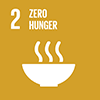
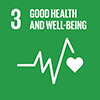
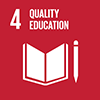

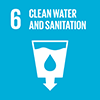

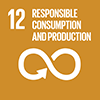
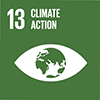
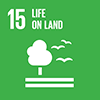
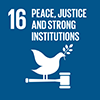
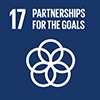
 Start: 01 January, 2000
Start: 01 January, 2000 Completion: 01 December, 2025
Completion: 01 December, 2025